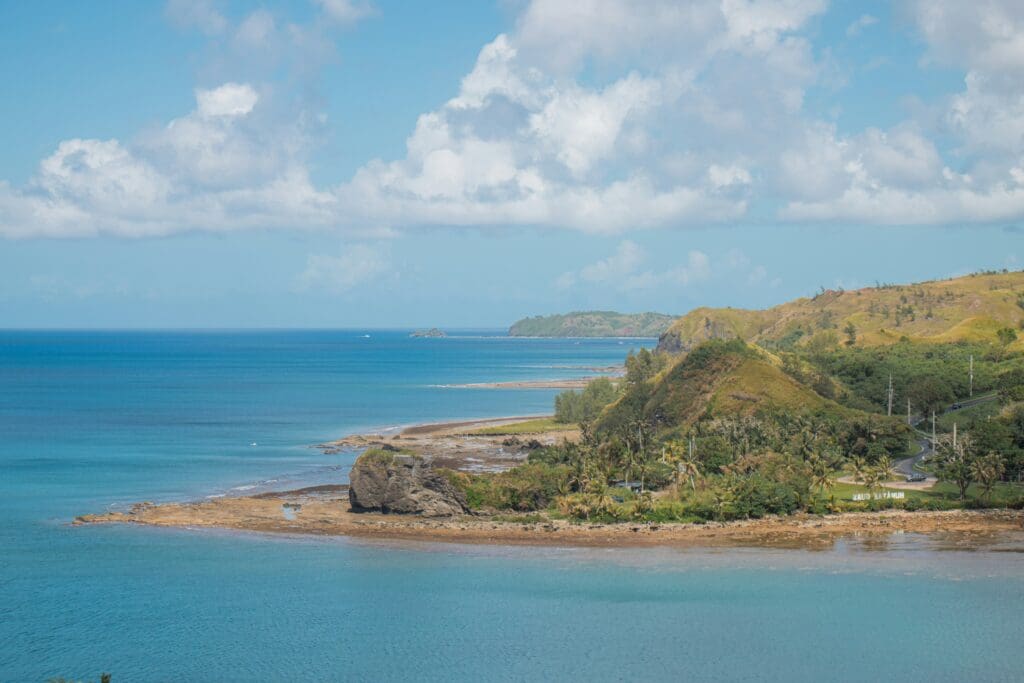A deeper look into CHamoru roots, colonization, and cultural survival.

Guam’s story is one of survival, resistance, and renaissance. Beneath the postcard perfect beaches and swaying coconut trees lies a rich and layered history shaped by migration, colonization, and war. At the heart of it all is deep cultural pride and the enduring spirit of the CHamoru people. This is an expansive look into Guam’s past, from its ancient origins to its modern-day identity.
Ancient Beginnings: Where the CHamoru People Come From
The indigenous CHamoru people are believed to have arrived in the Mariana Islands over 3,500 years ago, making Guam the longest continually inhabited island in the Pacific. Archaeological evidence traces their origins to Southeast Asia, likely modern-day Indonesia or the Philippines. Using canoes and star-based navigation, these seafaring people settled on Guam and the Northern Mariana Islands, developing a distinct society marked by impressive latte stone structures, complex clan systems, and a matrilineal culture.
Guam’s ancient name, “Guåhan,” means “we have.” It reflects the island’s abundance and self-sufficiency. The CHamoru people lived sustainably, fishing the seas and farming the land, guided by a worldview deeply tied to nature and community.
First Contact and Spanish Colonization (1521-1898)
Guam first entered European maps when Ferdinand Magellan landed in 1521. His brief visit was followed by more than a century of intermittent Spanish stops. In 1668, formal colonization began with the arrival of Jesuit missionary Diego Luis de San Vitores.
This marked the start of nearly 230 years of Spanish rule. It was a time of dramatic cultural upheaval. The CHamoru population declined sharply due to disease and violent conflicts during the CHamoru-Spanish Wars (1670-1695). Survivors were forced into centralized villages and converted to Catholicism. Many CHamoru customs, beliefs, and oral traditions were suppressed, though not erased.
Despite colonization, CHamorus adapted by blending their culture with Spanish influence. The language absorbed Spanish vocabulary, Catholic traditions took root, and mestizo identities began to emerge.
The American Era Begins (1898-1941)
Guam was ceded to the United States after the Spanish-American War under the Treaty of Paris in 1898. Unlike the rest of the Marianas, which were sold to Germany, Guam became a U.S. territory.
Under the U.S. Navy administration, CHamorus were classified as non-citizen nationals. Schools were established and English was enforced, but political rights were limited. Although America brought infrastructure improvements and some economic development, CHamorus lived in a space of uncertainty. They were American in status, yet disconnected from full inclusion and separated from the rest of the Northern Marianas.
World War II and Japanese Occupation (1941-1944)
On December 8, 1941, just hours after the attack on Pearl Harbor, Guam was bombed and invaded by Japan. For nearly three years, the island endured a brutal Japanese occupation. CHamorus were subjected to forced labor, imprisonment, beatings, and execution. Villages were burned, families were separated, and hundreds died during what is now known as the Manenggon March, a forced relocation through the jungle.
The United States liberated Guam on July 21, 1944, a date now celebrated in Guam as Liberation Day. The cost was devastating. Much of the island was destroyed and many lives were lost. But this period remains a powerful reminder of CHamoru resilience and sacrifice.
Post-War Guam: Citizenship Without Self-Determination (1944-Present)
After the war, Guam became a key U.S. military outpost throughout the Cold War and beyond. In 1950, the Guam Organic Act granted U.S. citizenship to CHamorus and established a civilian government. However, Guam remained an unincorporated territory with limited self-governance and no voting representation in Congress.
Military land takings, cultural suppression, and economic inequality continued to affect daily life. At the same time, Guam saw modernization: expanded healthcare, public education, road systems, and a growing tourism industry, especially after the 1970s.
The CHamoru Renaissance in the late 20th century marked a turning point. Language, art, dance, and traditional knowledge experienced a cultural revival. Activists and scholars led movements for land return, cultural preservation, and political self-determination. These efforts continue today.
Today’s Guam: A Blending of Past and Present
Guam’s history is not only about colonization or conflict. It is also a story of survival, revival, and continuity. The CHamoru people have preserved their identity through centuries of change. Today, they are reclaiming their voice in conversations about decolonization, self-governance, and cultural sovereignty.
Modern Guam is home to a diverse community, but its indigenous heart remains strong. Across the island, efforts to revive the CHamoru language, protect sacred lands, and share ancestral wisdom with the next generation are growing stronger with each passing year.
Why This History Matters
Understanding Guam’s history is essential not just for visitors or researchers but for anyone who calls this island home. It honors the lived experiences of those who came before us and helps explain the unique relationship Guam has with the United States. It reveals the pride and pain interwoven in CHamoru identity and highlights the continued need for recognition, respect, and restoration.
There’s no place like Guam. And there’s no history like ours.
Explore more stories rooted in our culture, people, and places only here at There’s No Place Like Guam.